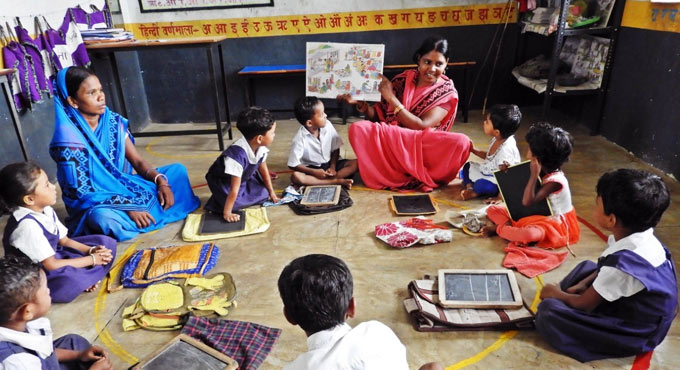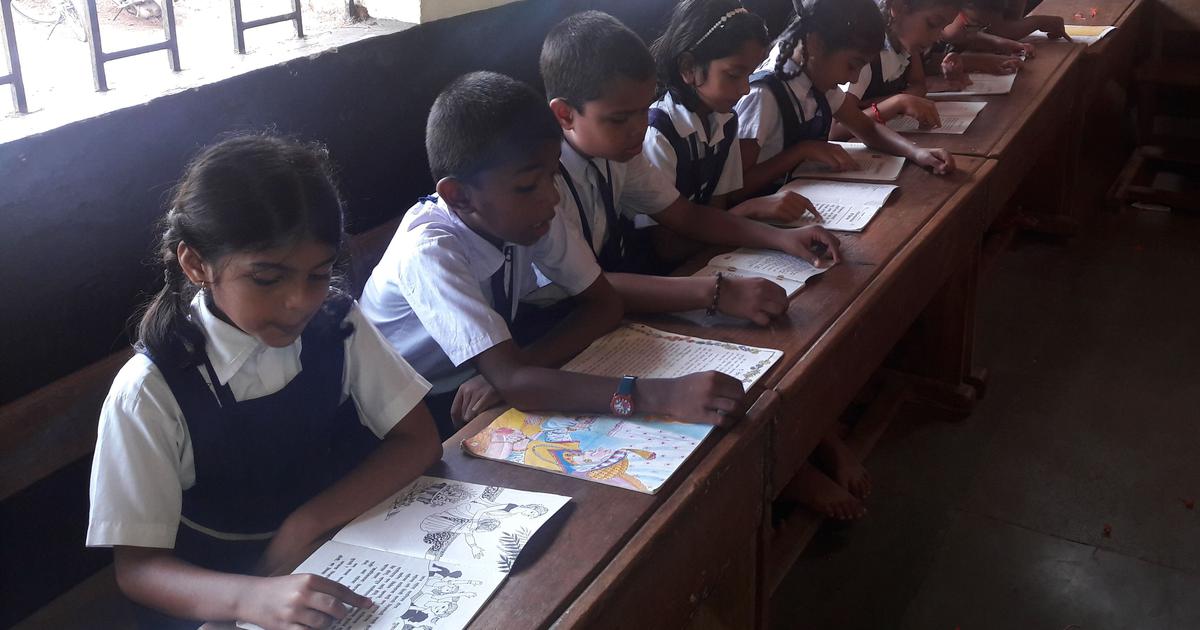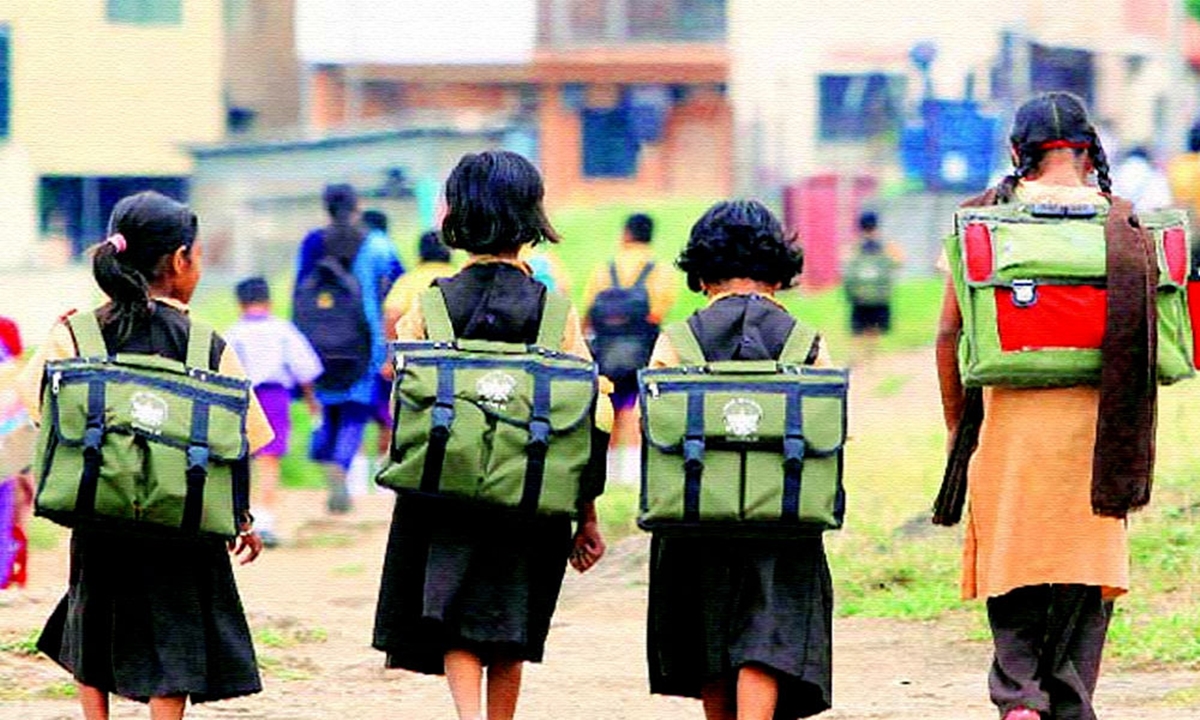
Implementation of National Education Policy, 2020 and the case of Angawadi Workers
The government’s vision of transforming early childhood education and care is out of touch with reality
A single room standing on four pillars is being divided into three parts to keep the centre operational. Twenty children in the age group of 3-6 years are sitting on the ground trying consciously and unconsciously to write something on their respective pieces of paper. Charts and posters are hanging on the walls depicting the letters, numbers, and some early bird poems which we typically learn in our childhood. The head of the centre is sitting on her chair checking some random files and documents which contain information about the pregnant and lactating women of the area. The helper of the centre is busy in the kitchen preparing nutritious meals for the children. This is a typical Anganwadi Centre (AWC) whose single room is responsible for the physical, motor, cognitive, and cultural development of a child. This is also the place where 85% of a child’s cumulative brain development occurs prior to the age of 6, indicating the critical importance of appropriate care and stimulation of the brain in a child’s early years for long-term healthy brain development and growth.
The National Education Policy 2020 (NEP 2020) believes that there is a dire need to provide high-quality Early Childhood Care and Education (ECCE) across the country with a special focus on districts and locations which are socio-economically disadvantaged. The intent and purpose of the NEP 2020 towards ECCE is long overdue. However, we need to first consider the current infrastructural and capacity building problems facing Anganwadi Centres and Anganwadi Workers before unearthing the core of the NEP 2020.
The problem
There are around 13.77 lakhs operational AWCs in the country. The Ministry of Women and Child Development has listed out 21 major roles and responsibilities of an Anganwadi Worker. Most of the roles and responsibilities are administrative in nature which forces the Anganwadi Worker to spend most of her time liasoning with the different stakeholders rather than keeping her focus on initiating the process of teaching, learning and taking care of children in an efficient manner. It is important to note that the Anganwadi Workers and Anganwadi Helpers have been envisaged as “honorary workers” and are hired from the local community on a part-time basis. They are paid a monthly honorarium which is decided by the government from time to time. Currently, the monthly honorarium for Anganwadi Workers ranges between 3500-4500 INR and for Anganwadi Helpers, it is 1500-2250 INR.
During my post-graduation at Azim Premji University, I was part of a team which tried to understand the major differences in the functioning of rural and urban Anganwadis. Despite the rural and urban contexts, both the ways of functioning and problems faced by Anganwadi Workers remained the same. In the words of an Anganwadi Worker (translated from Kannada) – “We have been assigned here for making the foundations of learning of the kids strong but we are doing everything except that. We spend most of our time talking to the lactating and pregnant women in the village. We have many administrative tasks to do and there is no one there to support us. With a meagre salary which is not even paid on time, you can’t expect one to be a superwoman.”
During the ongoing coronavirus pandemic the AWs were recognised as one of the ‘Frontline Health Staff’ and were ensured with additional responsibilities of delivering ration to the Integrated Child Development Services (ICDS) beneficiaries as well as educating rural people about the dos and don’ts of coronavirus. They were also required to prepare a list of outsiders visiting the villages.
NEP 2020 and Anganwadi Workers
NEP 2020 has tried to focus on two components when it comes to Early Childhood Care and Education (ECCE). The first component is about strengthening the curricular and pedagogical framework for early childhood education with the help of the National Council of Educational Research and Training (NCERT), and the second component is about building high-quality infrastructure with well-trained teachers. The policy document proposes to prepare an initial cadre of high quality ECCE teachers by training current Anganwadi Workers through systematic efforts according to the curricular/pedagogical framework developed by NCERT. While these are welcome steps, the policy document has missed out on explicitly delineating the roles and responsibilities of Anganwadi Workers. With the current administrative tasks at hand it becomes difficult for them to focus on improving the foundational learning of the children. There are a few aspects of the policy and the proposed ‘SARTHAQ’s NEP Implementation Plan’ document (Department of School Education and Literacy prepared this indicative plan with clearly defined goals, outcomes, and timeframe. SARTHAQ stands for Students and Teachers Holistic Advancement Through Quality Education), which could have addressed this but did not. Thus, the AWs continue to face the following challenges:
- As mentioned above, Anganwadi Workers are envisaged as honorary workers with a bare minimum honorarium and assigned a number of administrative responsibilities. The overarching goal of the NEP 2020 is to ensure universal access to high-quality ECCE by developing an initial cadre of high-quality ECCE teachers in Anganwadis. However, this appears unlikely to materialise if the current problems of the Anganwadi Workers are not addressed properly.
- Currently, an Anganwadi Worker works on the directions of four ministries – Ministry of Human Resource and Development, Ministry of Women and Child Development, Ministry of Health and Family Welfare, and Ministry of Tribal Affairs. There is no uniformity in their roles and responsibilities making it difficult for them to focus on the teaching and learning needs at the centre.
- The current contractual-voluntary nature of the work of Anganwadi Workers provides no safety net for them in the long run and has many implications on the method of carrying out the responsibilities. If the focus is to improve the rate of school readiness for children from socio-economically backward families, there is a high need of building trust among the Anganwadi Workers by bringing them in the permanent scheme of things.
Conclusion
Since different state governments have begun charting out plans for the implementation of the NEP 2020 in their respective jurisdictions, they should make sure that the Anganwadi Workers get their due. In recent times, Anganwadi Workers across the country were found on the streets fighting for their rights and demanding that they be considered as permanent workers. Foundational learning is an important component for the holistic development of children and it’s time that we recognise the needs of those who provide these foundational services. For successful implementation of the heart and soul of the NEP and for building a high quality cadre of ECCE teachers, it is important that state governments first define the roles and responsibilities of the Anganwadi Workers as clearly as possible and not overburden them with unnecessary administrative tasks in the process.



